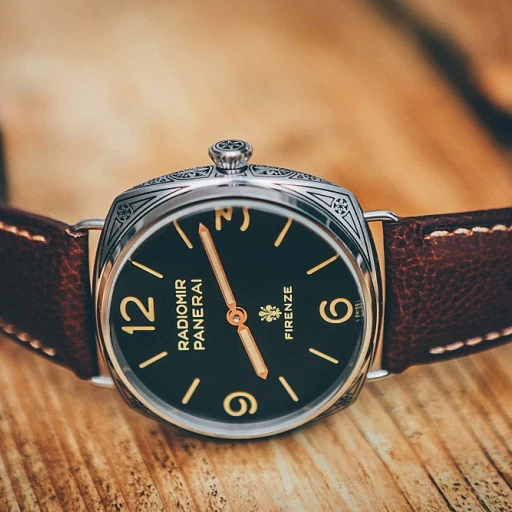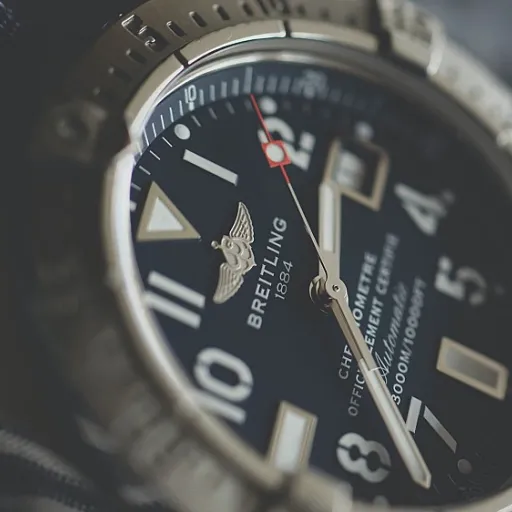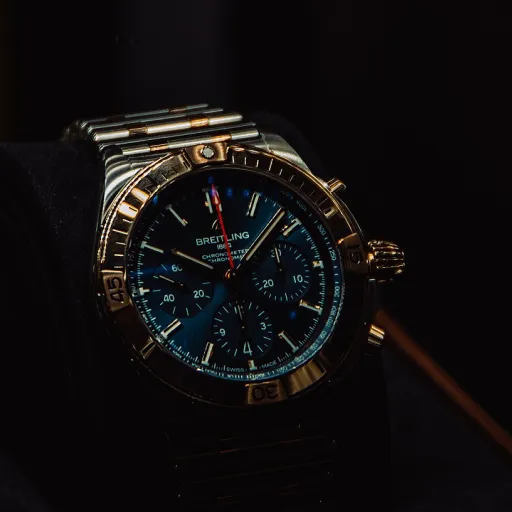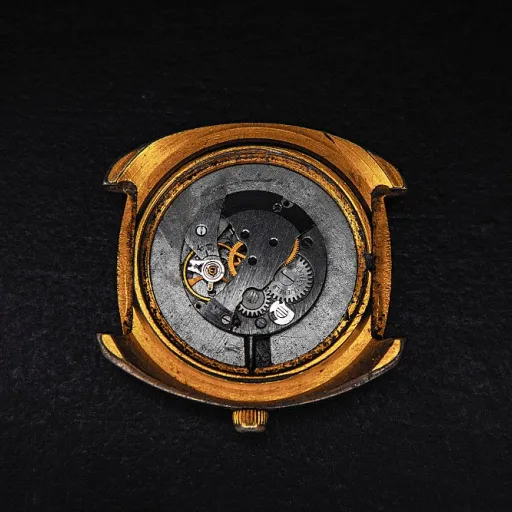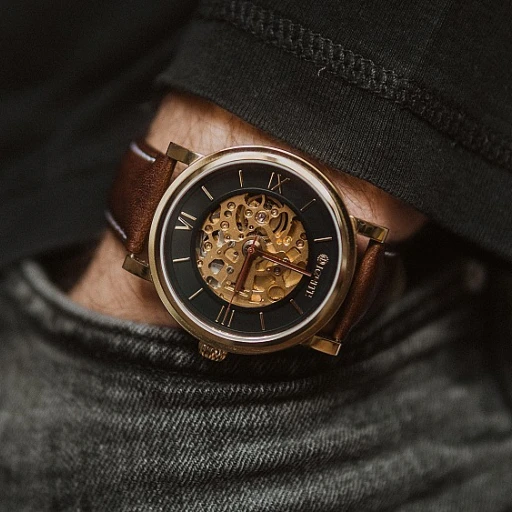
Understanding the Sellita SW500 movement
Inside the Heart of Swiss Precision
The Sellita SW500 movement stands as a cornerstone in the world of luxury mechanical watches, especially for enthusiasts who value reliability and versatility. This automatic chronograph movement is often compared to the ETA 7750, sharing a similar architecture and performance profile. The SW500 powers a range of prestigious timepieces, including those from brands like Maurice Lacroix, and is celebrated for its robust design and adaptability across various grades of movement.
What sets the SW500 apart is its balance between accuracy and durability. With a standard power reserve of around 48 hours, it offers ample autonomy for daily wear. The movement beats at 28,800 vibrations per hour, ensuring a smooth sweep of the seconds hand and precise timekeeping. Many collectors appreciate the SW500 for its ability to maintain accuracy seconds over extended periods, even when used in demanding dive watches or chronograph models.
Sellita offers several grades for the SW500, including standard, top grade, and chronometer grade. Each grade reflects different levels of finishing and adjustment, impacting the movement's accuracy and reliability. For those passionate about fine-tuning their watches, understanding these distinctions is essential when considering adjustment or calibration. The SW500's modular construction also makes it a favorite among watchmakers for servicing and upgrades, especially when compared to other Swiss movements.
In the broader watch industry, the SW500 has earned its place as a dependable alternative to ETA movements, especially as brands seek more control over supply chains. Its widespread use in mechanical watches and chronographs has sparked lively discussions on forums, where collectors debate the nuances of accuracy movement, reserve hours, and the best practices for adjustment. For a deeper dive into the technical artistry behind renowned Swiss movements, you might enjoy this exploration of the Ball Engineer III.
Understanding the SW500's core features—such as its seconds small subdial, position crown for time setting, and the interplay between day, date, and chronograph functions—lays the foundation for mastering calibration. Whether you're aiming for chronometer-grade accuracy or simply want to optimize your watch's performance, a solid grasp of the movement's mechanics is the first step toward achieving fine adjustment and maximizing power reserve hours.
Why precise calibration matters for luxury timepieces
The Role of Precision in Swiss Watchmaking
In the world of luxury watches, accuracy is not just a technical feature—it is a hallmark of excellence. The Sellita SW500 movement, a robust automatic chronograph often compared to the ETA 7750, is renowned for its reliability and performance. However, even the finest Swiss movements require meticulous adjustment to ensure they keep time within the strict tolerances expected by enthusiasts and collectors.
Why Every Second Counts
For those passionate about mechanical watches, the difference between a watch gaining or losing a few seconds a day can be significant. Luxury timepieces, especially those with chronometer or top grade movements, are expected to maintain accuracy within a narrow range—often just a few seconds per day. This level of precision is not only about pride in ownership but also about upholding the standards of the watch industry. Whether you own a Maurice Lacroix, a dive watch, or a classic chronograph, the adjustment of your Sellita movement directly impacts the accuracy seconds, power reserve hours, and overall performance.
Impact on Power Reserve and Complications
Proper calibration ensures that your SW500 delivers its full power reserve—often around 48 hours—while maintaining consistent accuracy. This is especially crucial for watches with additional complications, such as small seconds, day, or chronograph functions. An incorrectly adjusted movement can lead to issues like erratic seconds, poor reserve hours, or even malfunctioning complications.
Community Expectations and Industry Standards
Within watch forums and among collectors, the accuracy of a movement is a frequent topic of discussion. Swiss movements like the Sellita SW500 are often judged on their ability to maintain accuracy in various positions and over time. The adjustment process, from setting the position crown to fine-tuning the vibrations per hour, is a testament to the skill and dedication of both watchmakers and owners. For more insights into the differences between quartz and automatic movements, and why accuracy matters, you can explore the intriguing world of quartz and automatic watches.
Maintaining Value and Longevity
Finally, precise calibration is essential for preserving the value and longevity of your luxury watch. A well-adjusted Sellita movement not only ensures reliable timekeeping but also protects the intricate components from unnecessary wear. This attention to detail is what sets high-end mechanical watches apart and keeps them cherished for generations.
Essential tools for calibrating the Sellita SW500
Key Instruments for Precision Adjustment
Calibrating a Sellita SW500 movement demands more than a steady hand. The right tools are essential for achieving the accuracy expected from Swiss luxury watches. Whether you’re adjusting the seconds, fine-tuning the power reserve, or ensuring the chronograph functions align perfectly, each instrument plays a critical role in the process.
- Timegrapher: This device measures the accuracy of your movement in seconds per day, displaying beat error, amplitude, and rate. It’s indispensable for evaluating the performance of automatic and mechanical watches, especially when working with chronometer grade or top grade Sellita movements.
- Case Back Opener: To access the movement, a reliable opener is necessary. This tool helps prevent scratches and maintains the integrity of your dive watches or any luxury case.
- Movement Holder: Stability is crucial. A movement holder keeps your Sellita movement secure during adjustment, reducing the risk of accidental damage to the balance wheel or other delicate components.
- Precision Screwdrivers: Swiss-made screwdrivers, matched to the grades of movement screws, are vital for adjusting the regulator and other fine components. Using the correct size ensures you don’t strip screws or compromise the movement’s accuracy.
- Loupe or Magnification: High-quality loupes allow you to inspect the seconds hand, small seconds, and other intricate parts. This is especially important for chronograph and automatic movements where visibility is key.
- Rodico or Cleaning Putty: Dust and debris can affect the adjustment of your Sellita SW500. Rodico helps keep the movement clean, ensuring optimal performance and accuracy seconds.
- Hand Remover and Setter: These tools are essential for safely removing and installing hands, especially when adjusting for accuracy or correcting the position crown alignment.
For enthusiasts who appreciate the tactile luxury of their timepieces, investing in quality tools is as important as understanding the movement itself. The right equipment not only preserves the value of your watch but also enhances the satisfaction of achieving precise adjustment. If you’re passionate about elevating your watch’s presence, consider pairing your newly calibrated Sellita SW500 with a crocodile leather watch strap for a truly refined look.
Remember, each tool serves a unique purpose in maintaining the accuracy movement and reserve hours of your luxury watch. As you progress, you’ll find that mastering these instruments is as rewarding as the adjustment itself, especially within the broader context of the watch industry’s dedication to excellence.
Step-by-step guide to calibrating the Sellita SW500
Preparing Your Workspace and Tools
Before you begin, ensure your workspace is clean, well-lit, and free from dust. Gather all essential tools: a precision screwdriver set, anti-magnetic tweezers, a timegrapher for measuring accuracy seconds, a loupe, and a case holder. For the Sellita SW500 movement, having a movement holder is crucial to avoid damaging the automatic mechanism or chronograph components.Accessing the Movement Safely
Carefully remove the case back using the appropriate tool. If your watch is a dive watch or features a screw-down case back, apply gentle, even pressure to avoid scratching. Once open, locate the position crown and gently pull it to the time-setting position. This stops the seconds hand, allowing for precise adjustment.Regulating the Accuracy
Place the movement in the holder. Using the timegrapher, check the current accuracy movement. Observe the rate in seconds per day, amplitude, and beat error. For the Sellita SW500, a chronometer grade movement should ideally show a deviation of less than -4/+6 seconds per day, while top grade movements may perform even better.- To adjust timekeeping, locate the regulator arm on the balance cock.
- Move the regulator slightly towards the plus (+) or minus (-) to speed up or slow down the movement.
- Make small adjustments, then recheck on the timegrapher after each change.
Fine-Tuning for Power Reserve and Chronograph
After achieving satisfactory accuracy, test the power reserve by fully winding the movement and noting the hours power reserve. The SW500 should deliver around 48 hours reserve hours. Activate the chronograph function and observe the seconds small and day seconds hands for smooth operation. Any irregularities may indicate the need for further adjustment or lubrication.Reassembling and Final Checks
Once satisfied with the adjustment, carefully reinstall the movement into the case. Secure the case back, ensuring the gasket is intact for water resistance, especially for dive watches. Set the time and date, then monitor the watch over the next day to confirm consistent accuracy seconds and reliable performance. Regular calibration maintains the integrity of your Sellita movement, ensuring your luxury watch upholds the standards expected in the watch industry. If persistent issues arise, consider consulting a professional, as some challenges require specialized expertise, especially with mechanical watches of chronometer grade or higher.Common calibration challenges and troubleshooting
Typical obstacles during calibration
Even seasoned enthusiasts encounter hurdles when calibrating the Sellita SW500 movement. The complexity of this Swiss automatic chronograph, with its high vibrations per hour and intricate chronograph mechanism, means that achieving optimal accuracy in seconds and hours power reserve is a delicate process. Here are some common issues faced during adjustment:
- Inconsistent accuracy seconds: After adjustment, you may notice the watch gains or loses time irregularly. This can stem from uneven lubrication, dust, or slight misalignment in the movement's escapement.
- Power reserve fluctuations: If the reserve hours drop below the expected specification, it could indicate excessive friction or a worn mainspring, both of which impact the movement's ability to maintain consistent power.
- Chronograph reset errors: The chronograph seconds or small seconds hand may not return precisely to zero. This is often due to improper reassembly or wear in the reset mechanism, which is a known challenge in both Sellita and ETA-based movements.
- Day and date misalignment: Incorrect adjustment of the position crown during calibration can cause the day seconds or date to skip or fail to change at midnight. Ensuring the crown is in the correct position is essential for proper function.
- Amplitude drop: A noticeable decrease in amplitude (measured in degrees) can signal issues with the balance wheel or excessive drag in the gear train, affecting accuracy movement and reserve hours.
Effective troubleshooting strategies
Addressing these challenges requires a systematic approach. Start by verifying the cleanliness of the movement and the correct grade of lubrication. Use a timegrapher to monitor accuracy seconds and amplitude across multiple positions, as mechanical watches often display positional variance. If the Sellita movement continues to show erratic behavior, check for worn components, especially in chronograph and automatic winding modules.
For persistent issues, consult reputable watch industry forums where professionals and passionate collectors share insights on Sellita grades, top grade adjustments, and specific quirks of the SW500. Comparing your results with chronometer grade standards can help determine if your adjustment meets the high expectations of luxury dive watches or brands like Maurice Lacroix.
When DIY is not enough
Some calibration problems, such as repeated power reserve loss or inability to adjust time accurately, may indicate deeper mechanical faults. In such cases, entrusting your watch to a certified professional ensures the longevity and fine performance of your Swiss movement. Remember, the pursuit of precision in automatic movements is a hallmark of the luxury watch experience.
When to seek professional help for your Sellita SW500
Recognizing When Expert Intervention Is Needed
Even the most passionate enthusiasts of mechanical watches, including those with experience in adjusting the Sellita SW500 movement, may encounter situations where professional help is the wisest choice. The SW500, with its chronograph complication and high frequency of 28,800 vibrations per hour, is a robust yet intricate movement. While basic adjustment of accuracy, seconds, and power reserve can be managed with the right tools and patience, certain challenges require specialized expertise.- Persistent accuracy issues: If your watch continues to gain or lose significant seconds per day despite careful adjustment, deeper issues may be present. This could involve worn components, lubrication problems, or issues with the escapement—areas best handled by a certified watchmaker familiar with Sellita movements and their grades.
- Chronograph malfunction: The SW500’s chronograph mechanism is complex. If you notice the seconds hand stuttering, the small seconds subdial not resetting, or the chronograph failing to engage smoothly, it’s time for a professional assessment. Attempting to repair or calibrate these complications without proper training risks damaging the movement.
- Power reserve concerns: If your automatic watch is not achieving its expected reserve hours after a full wind, or if the movement stops unexpectedly, internal wear or a faulty mainspring could be the cause. These issues are not easily resolved without disassembly and a thorough inspection.
- Water resistance and dive watches: Any calibration or adjustment that involves opening the caseback of a dive watch or a model with significant water resistance ratings should be followed by a professional pressure test. This ensures the integrity of seals and gaskets, protecting your investment.
- Unusual noises or resistance: Grinding, scraping, or unexpected resistance when adjusting the crown position or setting the time can indicate mechanical problems. Forcing the movement can lead to costly repairs.


